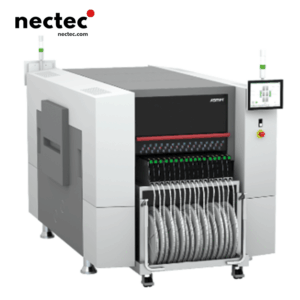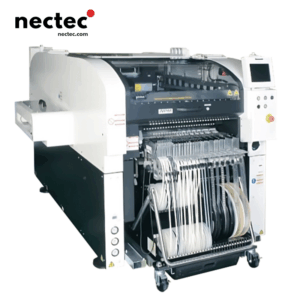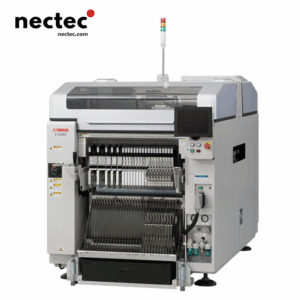In the ever-evolving landscape of electronics manufacturing, printed circuit boards (PCBs) form the backbone of virtually every electronic device. As technology progresses, the demand for faster, more accurate PCB assembly processes has never been greater. Enter the pick and place machine—a revolutionary device that has changed the face of PCB assembly lines across the globe.
Comprender las máquinas Pick and Place
At its core, a pick and place machine is an automated tool used for assembling electronic components onto a PCB. These machines swiftly and accurately pick components from their packaging and place them onto the PCB in precise locations, adhering to the design specifications laid out in the printed circuit diagram. Utilizing advanced optical sensors, robotics, and software, pick and place machines can achieve extraordinary levels of accuracy and efficiency.
La importancia de la automatización en el montaje de placas de circuito impreso
Automation has transformed manufacturing in multiple industries, and the PCB assembly sector is no exception. The integration of pick and place machines streamlines the manufacturing process, significantly reducing labor costs and minimizing human error. Let’s explore the various reasons why these machines are indispensable in modern PCB assembly:
- Mayor velocidad: Pick and place machines can place thousands of components per hour. This speed is crucial in meeting the high-demand production schedules typical in today’s fast-paced electronics market.
- Precisión mejorada: Automated systems eliminate many of the errors associated with hand-placing components, ensuring that each component is positioned accurately and that solder connections are reliable.
- Rentabilidad: Although the initial investment can be significant, the long-term savings in labor and material costs, as well as reduced waste, make pick and place machines a smart financial decision.
- Flexibilidad: Modern pick and place machines can handle a variety of component types and sizes, making them suitable for small-batch production or high-volume runs, thus adapting to manufacturers’ needs.
Características principales de las modernas máquinas Pick and Place
When selecting a pick and place machine for a PCB assembly factory, several important features should be considered:
1. Velocidad y rendimiento
Measured in placements per hour (PPH), the speed of pick and place machines can vary widely. High-end models may achieve rates of 50,000 PPH or more, making them ideal for large-volume production. For smaller operations, machines with speeds around 10,000 to 20,000 PPH may suffice.
2. Flexibilidad de los componentes
Today’s pick and place machines can handle a range of component types, from small 0201 chip resistors to larger leaded components. Look for machines offering interchangeable heads that can accommodate different sizes and types of components to enhance flexibility.
3. Precision and Placement Accuracy
The ability to place components with extreme precision is critical for ensuring the quality of the final product. Machines with advanced optical recognition systems and high-resolution cameras can significantly enhance placement accuracy.
4. Interfaz fácil de usar
A user-friendly interface allows for quick setup and programming, reducing downtime and enabling operators to focus on other critical tasks. Look for machines that provide intuitive software solutions to simplify the manufacturing process.
Elegir la máquina Pick and Place adecuada
Choosing the right pick and place machine involves assessing the specific needs of your PCB assembly line. Critical factors to consider include:
- Volumen de producción: A higher volume may warrant the investment in a more complex and faster machine.
- Type of PCB: Analyze the types of PCBs being manufactured. Complex designs with dense component layouts may require advanced pick and place technology.
- Presupuesto: It’s important to balance the desire for high-tech features with your budget constraints.
- A prueba de futuro: Consider potential future growth in your production capabilities to avoid obsolescence.
Impact of Industry 4.0 on PCB Assembly
The rise of Industry 4.0 has brought about significant changes in manufacturing, promoting the adoption of smart technologies. In the context of PCB assembly, pick and place machines are evolving into smart systems integrated with Internet of Things (IoT) technology. These systems enable real-time monitoring, predictive maintenance, and data analytics.
For example, manufacturers can monitor machine performance remotely, analyzing data to predict when a machine may need maintenance before it fails, thereby minimizing downtime. This increased connectivity leads to smarter, more efficient production processes and offers a considerable competitive advantage.
Formación y desarrollo de la mano de obra
While automation brings numerous benefits, it also necessitates a shift in workforce training and development. Operators must be equipped with the skills to manage automated systems and address any issues that arise during the production process. Continuous learning and adaptation are essential as technologies change. Providing ongoing training can empower workers to maintain productivity levels while using sophisticated machinery.
Environmental Considerations in PCB Assembly
With increasing environmental regulations and societal demands for sustainable practices, manufacturers must consider the environmental impact of their operations. Pick and place machines can contribute to sustainability initiatives by reducing material waste, ensuring efficient use of components, and improving overall manufacturing efficiency. Investing in energy-efficient models can also help factories reduce their carbon footprint while maintaining high levels of productivity.
El futuro de las máquinas pick and place
As technology continues to advance, we expect to see further innovations in pick and place machines. Developments such as artificial intelligence and machine learning could lead to even greater efficiencies, optimizing production processes and enhancing the capabilities of these essential machines. Moreover, with the increasing trend towards miniaturization in electronics, pick and place machines will continue to evolve, adapting to new component designs and sizes.
In conclusion, the role of pick and place machines in PCB assembly is undeniably critical. By increasing speed, accuracy, and efficiency, they empower manufacturers to meet the demands of an increasingly competitive electronics market. As we look ahead, the future of these machines appears bright, promising even greater advancements that will continue to shape the electronics manufacturing landscape.









